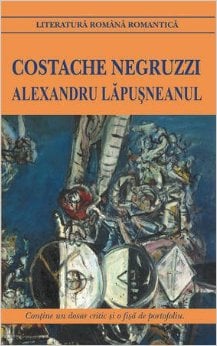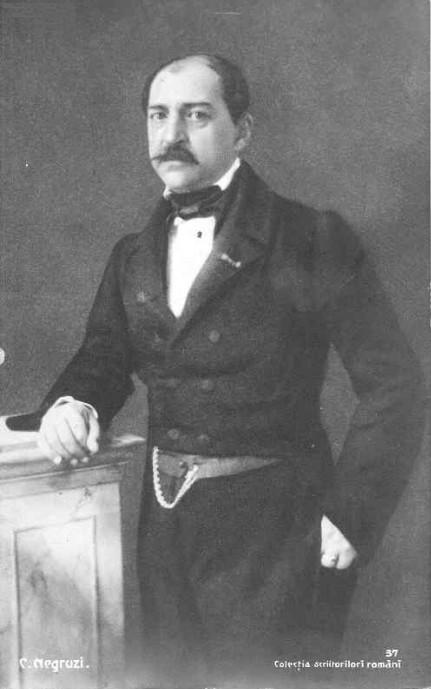
- Alexandru Lapusneanul
- Published by: Editura Cartex
- Level: Intermediate
- First Published in: 1840
This book Alexandru Lăpuşneanul is the first historical novel in Romanian literature, a masterpiece of the genre and a model for later authors.

Constantin Negruzzi was a Romanian politician and writer, and his book Alexandru Lăpuşneanul is the first historical novel in Romanian literature, a masterpiece of the genre and a model for later authors. It was published in the first issue of the Dacia Literară journal in 1940.
"Negruzzi, with his talent and imagination, managed to create believable fiction"
In order to write his novel, Negruzzi was inspired by older writings, especially those of the 15th century Moldavian chronicler Grigore Ureche. From these texts, he got information about Alexandru Lăpuşneanul, ruler of Moldavia in the mid 15th century, and his murder of 47 landowners. Recent research suggests that Lăpuşneanul was actually a gentlemen and not so cruel. He did not really kill those 47 landowners. But the most important thing is that Negruzzi, with his talent and imagination, managed to create believable fiction. His novel depicts events from the second reign of Lăpuşneanul (1564-1568), a tense time in the history of Moldavia because of power struggles.
The novel is composed of four chapters, each identified with a significant motto. With the first of these, “Dacă voi nu mă vreţi, eu vă vreu!” (If you don’t want me, I want you!), Lăpuşneanul announces his determination to occupy the throne against the boyars (in Moldavia, the boyar class was composed of landowners with serfs and military and/or political functions). The phrase linked to the second chapter, “Ai să dai samă, doamnă!” ( You have to realize , ma'am!), is spoken by the widow of a gentleman murdered by Lăpuşneanul, as she addresses Mrs. Ruxandra, the main character’s wife. “Capul lui Moţoc vrem!” (We want Moţoc’s head!) refers to the third chapter and it expresses the people’s anger. Motoc – Alexandru’s right hand – seems to be the only one guilty of all charges and crimes, so he ends up being stoned to death. Finally, in the fourth chapter, “De mă voi scula, pre mulţi am să popesc şi eu!” (For I shall arise , many people I’ll monk, too!), are the words said by Lăpuşneanul, who is very ill. He has a tragic end when he is poisoned by his wife, who is tired of her husband’s murders.

The novel’s language uses certain stylistic devices, like regionalisms, such as “pană” (correct form “până,” meaning “until”), “şepte” (correct form “şapte,” meaning “seven”), “clipală” (correct form “clipeală,” meaning “twinkling”), “găsând” (correct form “găsind,” meaning “finding”); and archaisms or old-fashioned words, such as “spahii” (bad habits), “spătar” (commander in chief when the ruler is missing), and “paharnic” (a nobleman at the court charged with taking care of the ruler’s drink). Meanwhile, the narrative style is characterized by brevity, sobriety, clarity, and a balance between neologisms and archaic terms.
In conclusion, as the famous Romanian literary critic George Calinescu has said, this novel “would have become a text as famous as Hamlet, if Romanian literature had been helped by the prestige of a universal language. I could not imagine a more perfect synthesis of deep pathetic gestures, words, memory, acute psychological observation, realistic intuition, and romantic attitudes.”
